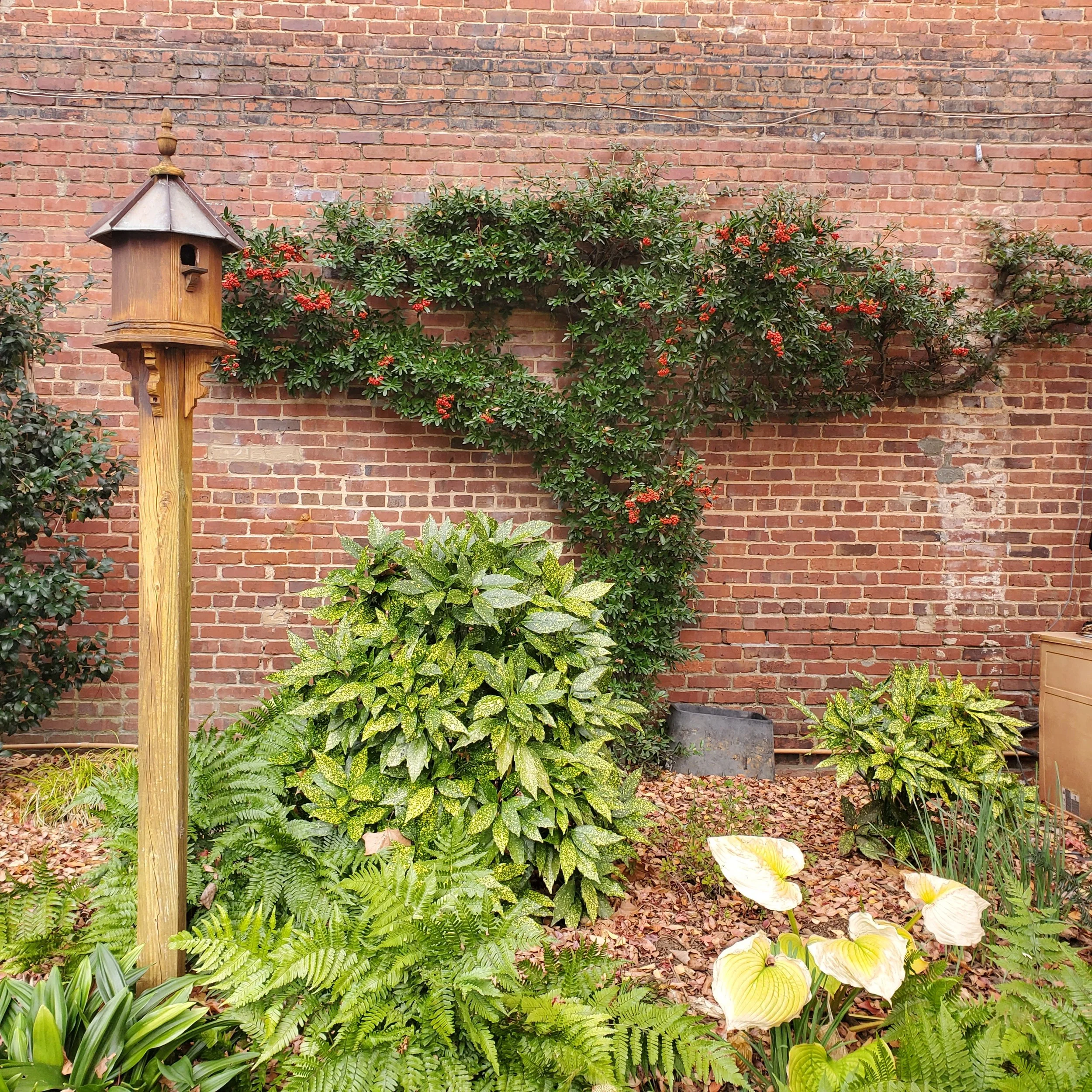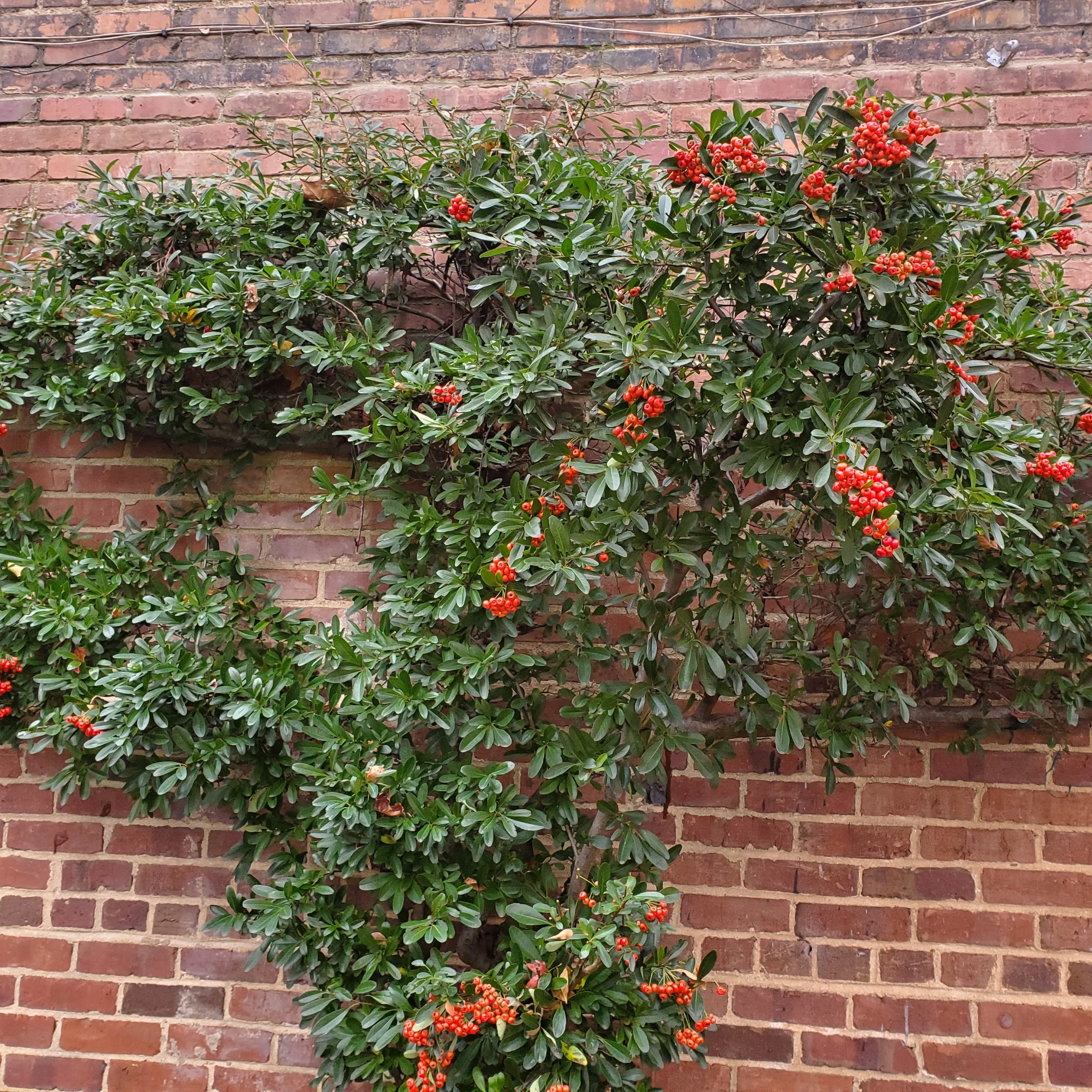Holiday decorating is in full swing. Whether fake or natural, colorful berries accent seasonal arrangements. I lean towards natural materials instead of the intensely colored clusters of Styrofoam berries found in almost every store. The powdery blue berries of cedar contrast beautifully against fragrant, feathery-looking foliage. Alas, those berries shed rapidly once indoors and the fluffy foliage turns stiff and prickly. Decorators who want natural red berries usually reach for Nandina or Holly. If you are lucky, a few seedpods from Magnolia grandiflora may still hold onto their decorative red seeds. Another option is Pyracantha coccinea (pronounced pi-ra-KANTHa kok-SIN-ee-a).
Pyracantha, also known as Scarlet Firethorn, is a semi-evergreen member of the Rosaceae (rose) family. While not a native, Pyracantha has spread across the southeast. Birds have scattered seeds everywhere, and it is not unusual to spot specimens flourishing along roadsides in ungroomed areas. This shrub will thrive in sun or part shade, acidic or neutral soil, in zones 6-9. Plants are resistant to heat and drought.
The berries are red, orange-red, or yellow, depending upon variety. Most are a reddish orange. Mature plants can reach arching mounds up to 15 feet tall. Cultivars ‘Red Elf’ and ‘Tiny Tim’ mature at a compact three feet and have red berries. ‘Apache’ and ‘Red Cushion’ have red berries and are resistant to fire blight and scab. ‘Teton’ is hard to find, but worth seeking for its yellow berries, as it combines well with variegated Aucuba, Gold Dust Shrub.
A single cut limb can decorate the length of a fireplace mantel. Berries remain attached to stems for a long time, a boon for holiday arrangements. Sharp spines occur along the length of the stems. It is advisable to remove the thorns with pruners as part of the harvesting process. If you opt to skip the thorn removal, use heavy gloves for post-season cleanup of cut limbs or be prepared to bleed.
Pyracantha grows fast, up to two feet per year. Blooms occur only on year-old wood, so avoid excessive pruning. Do not fertilize, as this can result in rampant overgrowth and reduced flowering. Pyracantha is best planted in the fall. Shrubs resent root disturbance, so select a permanent site. Flowers and fruit are carried on short spurs along the arching stems.
Pyracantha hedges discourage trespassers. Because of its rapid growth, Pyracantha makes an excellent candidate for espalier but requires frequent maintenance to maintain the desired shape. It has been a practice to locate shrubs under bedroom windows to discourage burglars but this can spell misery for the gardener who must maintain them. The tight clusters of white flowers smell bad, so if you decide to try your hand at espalier, select a brick wall or a trellis at a distance from outdoor seating areas. Pollinators flock to the flowers. Deer leave the plants alone, probably due to those sharp thorns.
This Pyracantha espalier is located in a downtown pocket park in Tryon, NC. The park is maintained by the Green Blades Garden Club of Tryon. Years ago, the espalier was an intricate form but it grew out of control and beyond the reach of a gardener standing on the ground. As a result, it had to be cut back hard this year. A new training effort is underway.
Heavy corrective pruning reduced the number of berries but it is lovely anyway. With careful shaping, it should be spectacular next year.


